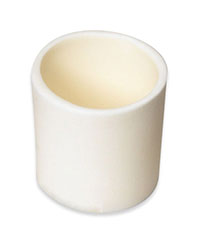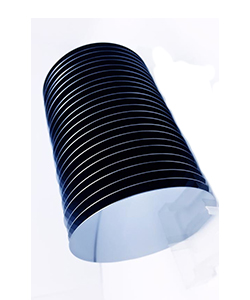 +86-731-89578196
+86-731-89578196
 [email protected]
[email protected]
- Home
- Our Company
-
Products
Sputtering Targets

- Industries
- Blog
- FAQ
- Contact Us
Melting Points Of Elements Reference - All 95 Elements
Melting point is a physical property that can help determine how a substance behaves under different conditions. It refers to the temperature at which a solid substance becomes liquid. In this post, we will discuss the melting points of elements and their significance in various fields.
Definition of Melting Point
The melting point of an element is the temperature at which it changes from solid to liquid. It is a physical property determined by the arrangement of atoms or molecules in a crystal lattice structure. The melting point varies from one element to another depending on atomic structure and other factors. It is measured in degrees Celsius or Fahrenheit.
Importance of Melting Point in Chemistry
Melting point is an important characteristic that helps identify and classify an element. In chemistry, it is used to determine substance purity. A pure substance has a specific melting point, but an impure substance has a lower melting point and a range of melting temperatures. Therefore, the melting point can measure substance purity.
All 95 Elements and Their Melting Points
Here is a table listing the melting points of all 95 naturally occurring elements in Celsius (°C) and Fahrenheit (°F). It includes the full name and atomic number of each element.
Element |
Full Name |
Atomic Number |
Melting Point (°C) |
Melting Point (°F) |
|
Ac |
Actinium |
89 |
1050°C |
1922°F |
|
Ag |
Silver |
47 |
961.93°C |
1763.47°F |
|
Al |
Aluminum |
13 |
660.32°C |
1220.58°F |
|
Am |
Americium |
95 |
1176°C |
2149°F |
|
As |
Arsenic |
33 |
817°C |
1503°F |
|
Au |
Gold |
79 |
1064.18°C |
1947.52°F |
|
B |
Boron |
5 |
2075°C |
3767°F |
|
Ba |
Barium |
56 |
727°C |
1341°F |
|
Be |
Beryllium |
4 |
1287°C |
2349°F |
|
Bi |
83 |
271.4°C |
520.52°F |
|
|
Br |
Bromine |
35 |
-7.2°C |
19.04°F |
|
C |
Carbon |
6 |
3500°C |
6332°F |
|
Ca |
Calcium |
20 |
842°C |
1548°F |
|
Cd |
Cadmium |
48 |
321.07°C |
609.93°F |
|
Ce |
Cerium |
58 |
795°C |
1463°F |
|
Cf |
Californium |
98 |
900°C |
1652°F |
|
Cl |
Chlorine |
17 |
-101.5°C |
-150.7°F |
|
Cm |
Curium |
96 |
1345°C |
2453°F |
|
Co |
Cobalt |
27 |
1495°C |
2713°F |
|
Cr |
Chromium |
24 |
1907°C |
3465°F |
|
Cs |
Cesium |
55 |
28.44°C |
83.19°F |
|
Cu |
Copper |
29 |
1083.4°C |
1982.12°F |
|
Dy |
66 |
1412°C |
2574°F |
|
|
Er |
68 |
1529°C |
2784°F |
|
|
Eu |
63 |
822°C |
1512°F |
|
|
F |
Fluorine |
9 |
-219.67°C |
-363.41°F |
|
Fe |
Iron |
26 |
1538°C |
2800.4°F |
|
Ga |
31 |
29.76°C |
85.57°F |
|
|
Gd |
Gadolinium |
64 |
1313°C |
2395°F |
|
Ge |
32 |
937.4°C |
1719.32°F |
|
|
H |
Hydrogen |
1 |
-259.14°C |
-434.45°F |
|
He |
Helium |
2 |
-272.2°C |
-457.96°F |
|
Hf |
72 |
2233°C |
4049°F |
|
|
Hg |
Mercury |
80 |
-38.83°C |
-37.89°F |
|
Ho |
67 |
1470°C |
2678°F |
|
|
I |
Iodine |
53 |
113.7°C |
236.66°F |
|
In |
49 |
156.6°C |
313.88°F |
|
|
Ir |
Iridium |
77 |
2410°C |
4370°F |
|
K |
Potassium |
19 |
63.38°C |
146.08°F |
|
Kr |
Krypton |
36 |
-157.36°C |
-251.25°F |
|
La |
57 |
920°C |
1688°F |
|
|
Li |
Lithium |
3 |
180.54°C |
356.97°F |
|
Lu |
71 |
1663°C |
3025°F |
|
|
Mg |
Magnesium |
12 |
650°C |
1202°F |
|
Mn |
25 |
1244°C |
2271.2°F |
|
|
Mo |
42 |
2623°C |
4753.4°F |
|
|
N |
Nitrogen |
7 |
-210.01°C |
-346.02°F |
|
Na |
Sodium |
11 |
97.72°C |
207.9°F |
|
Nb |
Niobium |
41 |
2468°C |
4474°F |
|
Nd |
Neodymium |
60 |
1024°C |
1875°F |
|
Ne |
Neon |
10 |
-248.59°C |
-415.26°F |
|
Ni |
Nickel |
28 |
1453°C |
2647.4°F |
|
No |
Nobelium |
102 |
827°C |
1521°F |
|
Np |
Neptunium |
93 |
640°C |
1184°F |
|
O |
Oxygen |
8 |
-218.79°C |
-361.82°F |
|
Os |
Osmium |
76 |
3306°C |
5983°F |
|
P |
Phosphorus |
15 |
44.15°C |
111.47°F |
|
Pa |
Protactinium |
91 |
1572°C |
2862°F |
|
Pb |
Lead |
82 |
327.46°C |
621.43°F |
|
Pd |
Palladium |
46 |
1552.2°C |
2825.96°F |
|
Pm |
Promethium |
61 |
1042°C |
1908°F |
|
Po |
Polonium |
84 |
254°C |
489.2°F |
|
Pr |
Praseodymium |
59 |
931°C |
1708°F |
|
Pt |
Platinum |
78 |
1768.3°C |
3214.94°F |
|
Pu |
Plutonium |
94 |
640°C |
1184°F |
|
Ra |
Radium |
88 |
700°C |
1292°F |
|
Rb |
Rubidium |
37 |
39.31°C |
102.76°F |
|
Re |
Rhenium |
75 |
3186°C |
5767.8°F |
|
Rh |
Rhodium |
45 |
1964°C |
3567.2°F |
|
Rn |
Radon |
86 |
-71°C |
-96.8°F |
|
Ru |
Ruthenium |
44 |
2334°C |
4233.2°F |
|
S |
Sulfur |
16 |
115.21°C |
239.38°F |
|
Sb |
Antimony |
51 |
630.63°C |
1167.14°F |
|
Sc |
Scandium |
21 |
1539°C |
2802°F |
|
Se |
Selenium |
34 |
217°C |
422.6°F |
|
Si |
Silicon |
14 |
1414°C |
2577.2°F |
|
Sm |
Samarium |
62 |
1072°C |
1962°F |
|
Sn |
Tin |
50 |
231.93°C |
449.47°F |
|
Sr |
Strontium |
38 |
769°C |
1416.2°F |
|
Ta |
Tantalum |
73 |
2996°C |
5424.8°F |
|
Tb |
Terbium |
65 |
1629°C |
2964.2°F |
|
Tc |
Technetium |
43 |
2172°C |
3952°F |
|
Te |
Tellurium |
52 |
449.51°C |
841.12°F |
|
Th |
Thorium |
90 |
1750°C |
3182°F |
|
Ti |
Titanium |
22 |
1668°C |
3034.4°F |
|
Tl |
Thallium |
81 |
304°C |
579.2°F |
|
Tm |
Thulium |
69 |
1545°C |
2813°F |
|
U |
Uranium |
92 |
1132.2°C |
2070°F |
|
V |
Vanadium |
23 |
1910°C |
3466°F |
|
W |
Tungsten |
74 |
3422°C |
6182.6°F |
|
Xe |
Xenon |
54 |
-111.8°C |
-169.24°F |
|
Y |
Yttrium |
39 |
1522°C |
2772°F |
|
Yb |
Ytterbium |
70 |
824°C |
1515.2°F |
|
Zn |
Zinc |
30 |
419.53°C |
787.15°F |
|
Zr |
Zirconium |
40 |
1852°C |
3366.4°F |
Conclusion
Understanding the melting points of elements is important for chemists in many applications. Melting points help identify substances and assess their purity. They also play a key role in designing and synthesizing materials. Exploring the melting points of all 95 elements gives a complete view of how elements melt across the periodic table. So, remember to consider the melting point of a substance to gain valuable insights. Any further questions, you can talk with our expert.











